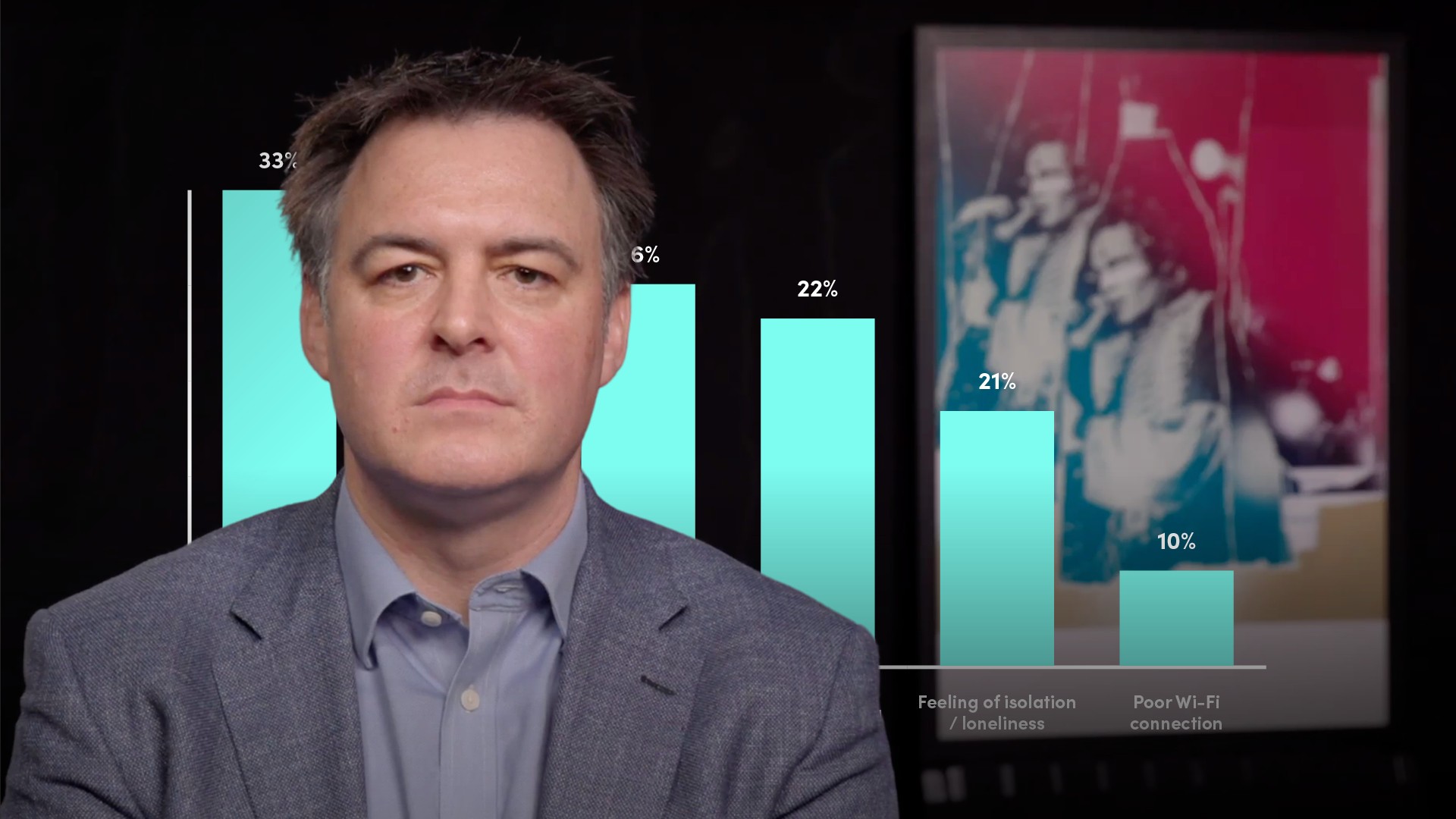
Working Remotely in a Sustainable Way I

Christian Hunt
25 years: Behavioural science & compliance
If you’re someone who's having to work remotely in a job that was originally designed to be done from an office, then this video is for you. In this two-part video series on "Working remotely in a sustainable way", Christian gives us an overview of some of the reasons why remote working can be challenging and what can be done to make it less of an ordeal for ourselves.
If you’re someone who's having to work remotely in a job that was originally designed to be done from an office, then this video is for you. In this two-part video series on "Working remotely in a sustainable way", Christian gives us an overview of some of the reasons why remote working can be challenging and what can be done to make it less of an ordeal for ourselves.

Working Remotely in a Sustainable Way I
16 mins 9 secs
Key learning objectives:
Understand how remote working feels different
Identify ways to make remote working more manageable
Describe "The Bright Side" and how it can help in the case of remote working
Overview:
In a world where we may not have a choice about whether we have to work from home, we do have a choice about how we perceive the experience. If we can find upsides and focus on those, it’ll help make us feel more optimistic about the whole thing.
Why does remote working feel different?
- Working remotely for a prolonged period isn’t something we ever planned for
- By not working in an office, we are deprived of many of the sources of information that help us to make decisions. In a physical environment, we can simply walk about and assess what’s going on by observing and speaking with other people. In a remote environment, we lose the ability to use our senses in the way that we usually do
- In-person, many more modes of communication exist than they do remotely. Where the physical world allows us to select our method of interaction carefully to reflect the nature of the conversation, the digital world forces us to use the same channels
- We also lack easy access to information. In an office environment, it is easy to find answers to questions we have; we can just ask a coworker. And if they don’t know, we can easily ask another one. That becomes much harder when we’re not sitting alongside them
- We often transmit and receive information with our colleagues on an informal basis. Think of the number of conversations that you’ll have had ‘side of desk’, outside meetings. In a digital-only world, those discussions are less likely to happen
- In a remote working environment, we don’t have face-to-face interaction. In a physical environment, we can sense when other people are in a bad mood or having a difficult day. Remotely, we have none of those cues and can only make assessments based on what we see or hear, when we see or hear from them
- The lack of face to face interaction can result in social isolation. For all its faults, the office doesn’t just provide us with a physical working environment it also offers informal social interactions that allow relationships to be formed and for people to absorb and contribute to the corporate culture
- Working from home means we miss serendipitous moments. We do not have random encounters in the coffee bar or elevator
How can we make remote working more manageable?
We need to embrace the situation. It’s tempting to see everything through a negative lens. We focus far more on things that are missing from our lives than the things that are present. It is always worth remembering that we should focus on the positives of the situation.
What is “The Bright Side” and how can it help in the case of remote working?
‘The Bright Side” is named after the Monty Python song “Always Look on the Bright Side of Life”. The Bright Side works with any situation where you want to identify positives that you might not have thought of or take for granted. You’re going to create a list of at least five things that are improved by working from home.
- Firstly, grab a piece of paper or open a spreadsheet or table on an electronic device and create two columns. Make the first one around 3-4x larger than the second
- Then, come up with a positive-sounding name for your list. Maybe it’s “Reasons I love working from home” or “The best things about home working”. Then In the left-hand column, you’re going to write down your ideas. There’s one rule when you do that, which is that you have to start each item on the list with a positive frame
- Something like “It allows me to”, as in “It allows me to spend more time with my kids” or “I can now”, as in “I can now go for a morning run, instead of catching the train”
- Then when you’ve finished, go down the list and, in the right-hand column, note down when or where the thing you’ve put in the first column happens. So for example, if you love the fact you can make your coffee, rather than having to drink the disgusting coffee from the machine at work, write down “morning at the coffee machine”. If it's not having to spend a small fortune to pay for the privilege of standing for an hour on an overcrowded train, then write that down
- What The Bright Side is doing, is helping you focus on things you might otherwise not notice. The time and location column is designed to help you notice the next time those things happen.

Christian Hunt
There are no available Videos from "Christian Hunt"





















